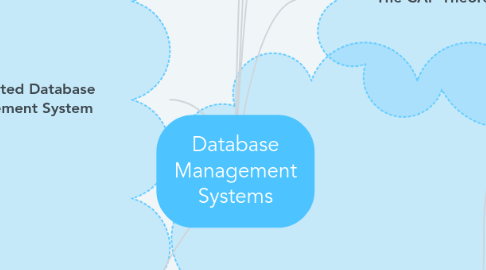
1. Distributed Database Management System
1.1. Evolution of Distributed Database Management System
1.1.1. Acceptance of internet as a platform for business
1.1.2. Mobile wireless revolution
1.1.3. Usage of application as a service
1.1.4. Focus on mobile business intelligence
1.2. DDBMS Components
1.2.1. Computer workstation
1.2.2. Network hardware and software components
1.2.3. Communication Media
1.2.4. Transaction processor (TP)
1.2.5. Data processor (DP) or data manager (DM)
1.3. Distributed Processing & Distributed Databases
1.3.1. Distributed Processing
1.3.1.1. Single-Site Processing, Single-Site Data
1.3.1.2. Multiple-Site Processing, Single-Site Data
1.3.1.3. Multiple-Site Processing, Multiple-Site Data
1.3.2. Distributed Database
1.3.3. Database Fragments
1.4. Advantages
1.4.1. Data available in site of great demand
1.4.2. Faster Data Access
1.4.3. Faster Data Processing
1.4.4. Growth Facilitation
1.4.5. Improved Communications
1.4.6. Reduced Operating cost and User-friendly interface
1.4.7. Processor Independence
2. BASE
2.1. Basically Available
2.1.1. Means,if the part of the system fails the rest of it continues to function.
2.2. Soft state
2.2.1. Data may eventually be overwritten with more recent data
2.3. Eventually consistent
2.3.1. Data is replicated across servers, which results in data inconsistency
3. Centralized Database Management System
3.1. Disadvantages
3.1.1. Globalization of business operation
3.1.2. Rapid growth of social and network technologies
3.1.3. Innovative business intelligence through analysis of data
3.1.4. Advancement of web-based services
4. The CAP Theorem
4.1. Consistency
4.1.1. All nodes should see the same data at the same time
4.2. Availability
4.2.1. Simply speaking, a request is always fulfilled by the system.
4.3. Partition Tolerance
4.3.1. The system continues to operate even in the event of a node failure.
5. ACID Properties
5.1. Atomicity
5.1.1. All or nothing
5.2. Consistency
5.2.1. any data must not violate any of predetermined rules
5.3. Isolation
5.3.1. it occurs fully or not available
5.4. Durability
5.4.1. Data is persistent.
6. Distributed Database Design
6.1. Data Allocation
6.1.1. Centralized Data Allocation
6.1.1.1. Entire database is stored at one site
6.1.2. Partitioned Data Allocation
6.1.2.1. Divided and stored into two or more sites
6.1.3. Replicated Data Allocation
6.1.3.1. Copies of one or more and stored at several sites
6.2. Data Fragmentation
6.2.1. Horizontal Fragmentation
6.2.1.1. Division of relation into subsets of tuples
6.2.1.1.1. Round-Robin partitioning
6.2.1.1.2. Range partitioning with a partition key
6.2.2. Vertical Fragmentation
6.2.2.1. Division of relation into subsets of attributes
6.2.3. Mixed Fragmentation
6.2.3.1. Combination of horizontal and vertical strategies
6.3. Data Replication
6.3.1. Fully Replicated
6.3.1.1. Stores multiple copies at multiple sites
6.3.2. Partially Replicated
6.3.2.1. Stores multiple copies at multiple sites of some database
6.3.3. Unreplicated
6.3.3.1. Stores each fragment at single site
